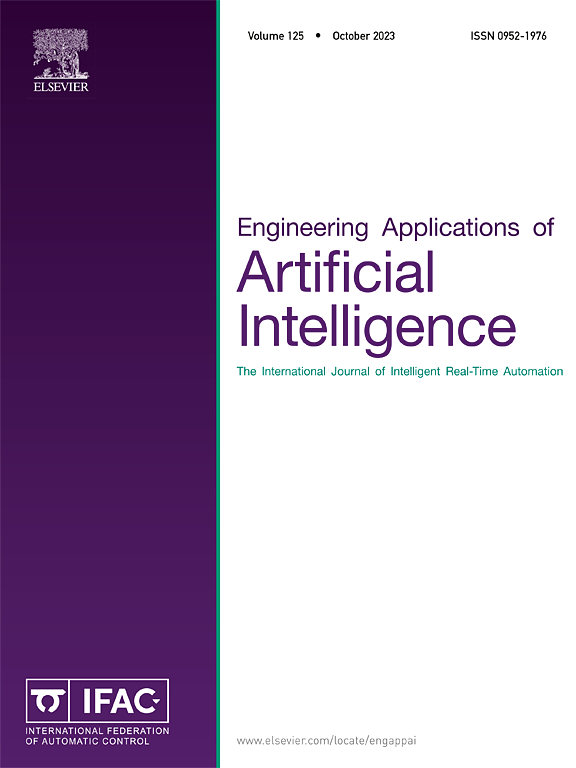An edge-guided defect segmentation network for in-service aerospace engine blades
IF 7.5
2区 计算机科学
Q1 AUTOMATION & CONTROL SYSTEMS
Engineering Applications of Artificial Intelligence
Pub Date : 2025-05-01
DOI:10.1016/j.engappai.2025.110974
引用次数: 0
Abstract
Currently, 80 % of in-service aerospace engine blade defect detection relies on manual visual assessment. Operators use a borescope to capture images of the blade surface and make judgments based on their experience and expertise. However, this method is costly and time-consuming. With the widespread application of artificial intelligence across various fields, its strong capabilities in automated defect detection are becoming increasingly evident. To meet the demand for efficient defect detection in aero-engine blades, we have constructed a dataset based on videos collected from real inspection scenarios, ensuring alignment with actual defect types.
Based on this dataset, we analyze existing defect detection methods for in-service aero-engine blades and propose an improved edge-guided and channel-enhanced network using the "Transformer" architecture. Our method leverages global edge information from "Segment Anything (SAM)" to guide learning, while the channel shuffling module boosts feature capture. Experimental results show an mean intersection over union (mIoU) of 88.13 % and a detection speed of 30.6 frames per second (FPS) on a single graphics processing unit (GPU), meeting real-world efficiency needs. The code will be publicly available at the link: https://github.com/Newbiejy/EGCIENet_In-service-blade-defect-detection.
在役航空发动机叶片边缘引导缺陷分割网络
目前,80%的在役航空发动机叶片缺陷检测依赖于人工目视评估。操作人员使用管道镜捕捉叶片表面的图像,并根据他们的经验和专业知识做出判断。然而,这种方法既昂贵又耗时。随着人工智能在各个领域的广泛应用,其在自动化缺陷检测方面的强大能力日益显现。为了满足航空发动机叶片高效缺陷检测的需求,我们基于从真实检测场景中收集的视频构建了一个数据集,确保与实际缺陷类型保持一致。在此基础上,分析了现役航空发动机叶片现有缺陷检测方法,提出了一种基于“Transformer”架构的改进边缘引导通道增强网络。我们的方法利用来自“Segment Anything (SAM)”的全局边缘信息来指导学习,而信道变换模块则增强了特征捕获。实验结果表明,在单个图形处理单元(GPU)上,平均交联率(mIoU)为88.13%,检测速度为30.6帧/秒(FPS),满足现实世界的效率需求。代码将在以下链接公开:https://github.com/Newbiejy/EGCIENet_In-service-blade-defect-detection。
本文章由计算机程序翻译,如有差异,请以英文原文为准。
求助全文
约1分钟内获得全文
求助全文
来源期刊

Engineering Applications of Artificial Intelligence
工程技术-工程:电子与电气
CiteScore
9.60
自引率
10.00%
发文量
505
审稿时长
68 days
期刊介绍:
Artificial Intelligence (AI) is pivotal in driving the fourth industrial revolution, witnessing remarkable advancements across various machine learning methodologies. AI techniques have become indispensable tools for practicing engineers, enabling them to tackle previously insurmountable challenges. Engineering Applications of Artificial Intelligence serves as a global platform for the swift dissemination of research elucidating the practical application of AI methods across all engineering disciplines. Submitted papers are expected to present novel aspects of AI utilized in real-world engineering applications, validated using publicly available datasets to ensure the replicability of research outcomes. Join us in exploring the transformative potential of AI in engineering.
 求助内容:
求助内容: 应助结果提醒方式:
应助结果提醒方式:


